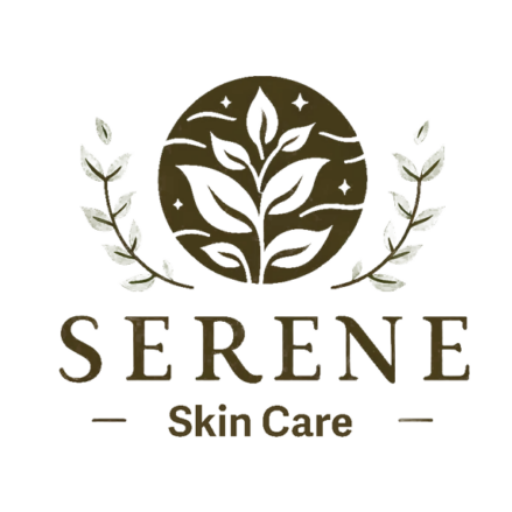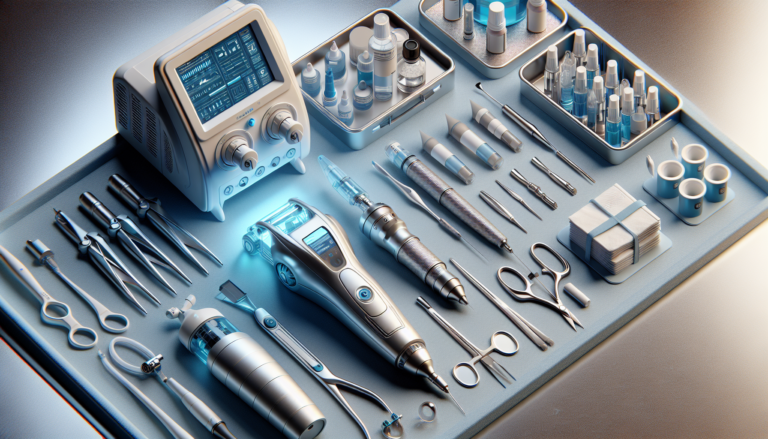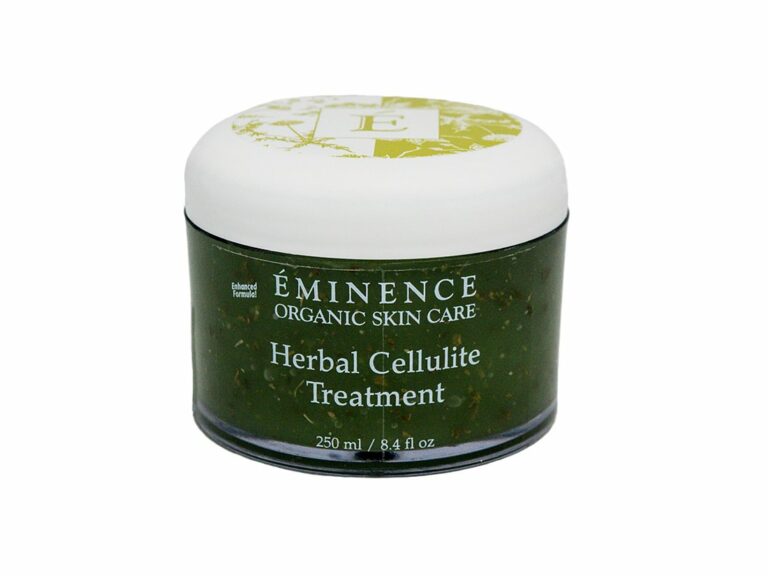Rosacea, a chronic skin condition that affects millions of people worldwide, can cause redness, flushing, and visible blood vessels on the face. In this informative article, the focus will be on advanced techniques for understanding and treating this condition. Expanding on traditional approaches, these cutting-edge methods aim to provide individuals with a deeper understanding of the underlying causes of rosacea and offer innovative solutions for effective management. From innovative medications to targeted therapies, this article will explore the latest advancements in the field, shedding light on how individuals can gain control over their rosacea symptoms and improve their overall quality of life.
Understanding Rosacea
Rosacea is a common skin condition that primarily affects the face. It is characterized by redness, flushing, and the presence of small, visible blood vessels. People with rosacea may also experience bumps and pimples, as well as dry and irritated skin. While the exact cause of rosacea is unknown, there are certain factors that can contribute to its development, such as genetics and environmental triggers.
What is Rosacea?
Rosacea is a chronic inflammatory skin condition that mainly affects the central face, including the cheeks, nose, and forehead. It typically begins with episodes of flushing or redness, which may be triggered by certain factors such as heat, exercise, spicy foods, or alcohol. Over time, the redness may become more persistent and visible blood vessels may appear on the surface of the skin. In some cases, rosacea can also lead to the development of bumps and pimples, similar to acne.
Causes of Rosacea
The exact cause of rosacea is still unknown, but researchers believe that a combination of genetic and environmental factors play a role in its development. Individuals who have a family history of rosacea are more likely to develop the condition themselves. Additionally, certain environmental triggers can exacerbate the symptoms of rosacea, including exposure to sunlight, hot weather, spicy foods, alcohol, stress, and emotions.
Symptoms of Rosacea
The symptoms of rosacea can vary from person to person, but there are some common signs to look out for. The most prominent symptom is persistent facial redness, often in the form of a flushed appearance or a tendency to blush easily. Another common symptom is the presence of small, visible blood vessels on the surface of the skin, known as telangiectasia. Individuals with rosacea may also experience bumps and pimples similar to acne, as well as dry and irritated skin. In some cases, people with rosacea may also have ocular symptoms, such as dry and itchy eyes.
Diagnosing Rosacea
Diagnosing rosacea usually involves a combination of a medical history assessment and a physical examination by a dermatologist or healthcare provider. During the medical history assessment, the healthcare provider will ask the patient about their symptoms, including the triggers that worsen or improve their condition. They will also inquire about any family history of rosacea or other skin conditions. The physical examination will involve a thorough inspection of the skin, looking for signs of persistent redness, visible blood vessels, bumps, and any other characteristic features of rosacea.
In some cases, diagnostic tests may be needed to confirm the diagnosis and rule out other possible conditions. These tests may include a skin biopsy, which involves taking a small sample of skin for microscopic examination, or a blood test to check for other underlying conditions. However, these tests are typically not required for most cases of rosacea.
Types of Rosacea
There are several subtypes of rosacea, each with its own set of symptoms and characteristics. These subtypes can help determine the most appropriate treatment approach for individuals with rosacea.
Erythematotelangiectatic Rosacea
Erythematotelangiectatic rosacea is characterized by persistent facial redness and visible blood vessels on the skin. People with this subtype of rosacea may also experience a burning or stinging sensation, as well as sensitivity to skincare products.
Papulopustular Rosacea
Papulopustular rosacea is often referred to as “acne rosacea” because it resembles acne. In addition to persistent redness and visible blood vessels, individuals with this subtype may develop bumps and pimples on their face, similar to those seen in acne vulgaris.
Phymatous Rosacea
Phymatous rosacea is characterized by thickened and bumpy skin, especially on the nose. This condition can also result in the enlargement of oil glands, leading to a bulbous and irregular appearance of the nose, a condition known as rhinophyma.
Ocular Rosacea
Ocular rosacea primarily affects the eyes, causing symptoms such as dryness, redness, irritation, and sensitivity to light. Individuals with ocular rosacea may also experience blurry vision and a gritty or foreign body sensation in the eyes.
Trigger Factors of Rosacea
While the exact cause of rosacea is still unknown, certain trigger factors have been identified that can worsen the symptoms or lead to flare-ups. It is important for individuals with rosacea to be aware of these triggers and take steps to avoid or manage them.
Sun exposure
Exposure to sunlight is a common trigger for rosacea. The ultraviolet (UV) rays from the sun can cause inflammation and can exacerbate redness and flushing in individuals with rosacea. It is recommended to always wear sunscreen with a high SPF and to seek shade during peak sun hours.
Hot weather
Hot weather and high temperatures can also trigger rosacea symptoms. The heat can dilate blood vessels, leading to increased redness and flushing. It is important to stay cool in hot weather and avoid excessive exposure to heat.
Spicy foods and alcohol
Spicy foods and alcohol are known triggers for rosacea in many individuals. These substances can cause blood vessels to dilate, leading to increased redness and flushing. It is advisable to limit the consumption of spicy foods and alcohol for individuals with rosacea.
Stress and emotions
Emotional stress and strong emotions can trigger rosacea flare-ups. Stress hormones can cause blood vessels to dilate and increase inflammation in the skin. It is important to find healthy coping mechanisms to manage stress and practice relaxation techniques.
Skin products and cosmetics
Certain skincare products and cosmetics can worsen rosacea symptoms. It is important to choose gentle, non-irritating products that are specifically formulated for sensitive skin. Avoiding products with harsh ingredients, fragrances, and alcohol can help minimize irritation and flare-ups.
Managing Rosacea
While there is no cure for rosacea, there are various treatment options available to manage the symptoms and improve the overall condition of the skin. The goal of treatment is to reduce redness, control inflammation, and minimize the occurrence of flare-ups. Treatment plans are often tailored to the specific subtype of rosacea and the individual’s unique needs.
Medical Therapies
Medical therapies for rosacea may include topical medications, oral medications, laser and light therapies, and in some cases, surgical interventions. These treatments are typically prescribed by a dermatologist or healthcare provider.
Topical Medications
Topical medications are commonly used in the treatment of rosacea. These medications may include topical antibiotics, such as metronidazole or azelaic acid, which help to reduce inflammation and control the bacteria associated with rosacea. Other topical treatments, such as brimonidine gel or oxymetazoline cream, can help constrict blood vessels and reduce redness.
Oral Medications
In more severe cases of rosacea, oral medications may be prescribed. These medications may include antibiotics, such as doxycycline or tetracycline, to control inflammation and reduce the number of bumps and pimples. Oral isotretinoin may be considered in cases of severe rosacea that do not respond to other treatments.
Laser and Light Therapies
Laser and light therapies have become increasingly popular in the treatment of rosacea. These treatments can selectively target and destroy blood vessels, reducing redness and visible blood vessels. Intense Pulsed Light (IPL) therapy and vascular lasers are commonly used in the treatment of rosacea.
Skin Care Regimen
A proper skin care regimen is essential in managing rosacea and preventing flare-ups. This includes gentle cleansing with a mild cleanser, moisturizing to maintain the skin’s hydration, and using sunscreen with a high SPF to protect against sun damage. It is important to use products that are specifically formulated for sensitive skin and to avoid any known triggers or irritants.
Treating Erythematotelangiectatic Rosacea
Erythematotelangiectatic rosacea is characterized by persistent redness and visible blood vessels on the skin. The treatment approach for this subtype of rosacea focuses on reducing redness and managing sensitivity.
Anti-Inflammatory Medications
Topical anti-inflammatory medications, such as metronidazole or azelaic acid, can help reduce the inflammation and redness associated with erythematotelangiectatic rosacea. These medications are typically applied once or twice daily and can help improve the appearance of the skin over time.
Moisturizers and Sunscreen
Using a gentle moisturizer can help keep the skin hydrated and reduce dryness and irritation associated with erythematotelangiectatic rosacea. It is important to choose a moisturizer that is specifically formulated for sensitive skin and does not contain irritants or fragrances.
Laser and Intense Pulsed Light (IPL) Therapy
Laser and IPL therapy can effectively target and reduce visible blood vessels in erythematotelangiectatic rosacea. These treatments work by delivering energy to the blood vessels, causing them to collapse or shrink. Multiple sessions may be required to achieve optimal results.
Treating Papulopustular Rosacea
Papulopustular rosacea is characterized by the presence of bumps and pimples in addition to redness and visible blood vessels. The treatment approach for this subtype of rosacea focuses on controlling inflammation and reducing the number of papules and pustules.
Topical Antibiotics
Topical antibiotics, such as metronidazole or azelaic acid, can help reduce inflammation and kill the bacteria associated with papulopustular rosacea. These medications are typically applied once or twice daily and can be effective in reducing the number and severity of papules and pustules.
Oral Antibiotics
In more severe cases of papulopustular rosacea, oral antibiotics may be prescribed. These medications, such as doxycycline or tetracycline, help control inflammation and reduce the number of papules and pustules on the skin. Oral antibiotics are typically taken for a specific period and then discontinued or tapered off.
Combination Therapy
Combining different treatment modalities, such as topical and oral antibiotics, can often lead to better outcomes in the treatment of papulopustular rosacea. It is important to follow the prescribed treatment plan and schedule regular follow-up appointments with a healthcare provider.
Laser and IPL Therapy
Laser and IPL therapy can also be effective in treating papulopustular rosacea, particularly in reducing redness and visible blood vessels. These treatments can improve the overall appearance of the skin and help control the symptoms of rosacea.
Treating Phymatous Rosacea
Phymatous rosacea is characterized by thickened and bumpy skin, particularly on the nose. The treatment approach for this subtype of rosacea focuses on reducing the thickening of the skin and improving its texture.
Surgical Procedures
In severe cases of phymatous rosacea, surgical procedures may be considered. These procedures can help reshape and contour the affected areas of the skin, particularly the nose. Surgical interventions may include dermabrasion, cryosurgery, or laser resurfacing.
Laser and Electrosurgery
Laser and electrosurgery can be used to remove excess tissue and reduce the thickness of the skin in phymatous rosacea. These treatments can help improve the appearance of the affected areas and restore a more normal texture and contour.
Managing Ocular Rosacea
Ocular rosacea primarily affects the eyes and can cause symptoms such as dryness, redness, irritation, and sensitivity to light. The treatment approach for ocular rosacea focuses on managing these symptoms and preventing complications.
Eyelid Hygiene
Proper eyelid hygiene is essential in managing ocular rosacea. This includes gently cleansing the eyelids with a mild cleanser or a solution recommended by a healthcare provider. Warm compresses and lid massages can also help clear blocked meibomian glands and reduce eyelid inflammation.
Topical and Oral Medications
Topical and oral medications may be prescribed to manage the symptoms of ocular rosacea. Lubricating eye drops or artificial tears can help alleviate dryness and irritation. In some cases, a short course of oral antibiotics may be necessary to control inflammation and prevent infection.
New and Future Treatments for Rosacea
Research is ongoing to develop new and more effective treatments for rosacea. Several advancements have already been made in the field, and promising therapies are being investigated.
Advancements in Laser Technologies
Laser technologies continue to evolve, offering more precise and targeted treatments for rosacea. New laser systems can deliver energy to specific blood vessels while avoiding damage to the surrounding skin. These advancements may provide better outcomes and minimal downtime for individuals with rosacea.
Biologic Therapies
Biologic therapies, which target specific molecules involved in the inflammation and immune response, are being studied for the treatment of rosacea. These therapies have shown promise in other inflammatory skin conditions and may offer a more targeted and effective approach to managing rosacea in the future.
Targeted Therapies
Researchers are also exploring targeted therapies that aim to modulate the immune response and reduce the inflammation associated with rosacea. These therapies may help control the symptoms and prevent the progression of the disease.
In conclusion, understanding and treating rosacea require a comprehensive approach that takes into account the specific subtype of rosacea, trigger factors, and individual needs. While rosacea cannot be cured, advances in medical therapies, laser technologies, and targeted treatments offer hope for managing the symptoms and improving the overall quality of life for individuals with rosacea. By working closely with a healthcare provider, individuals with rosacea can develop a personalized treatment plan that best addresses their unique needs and goals.





